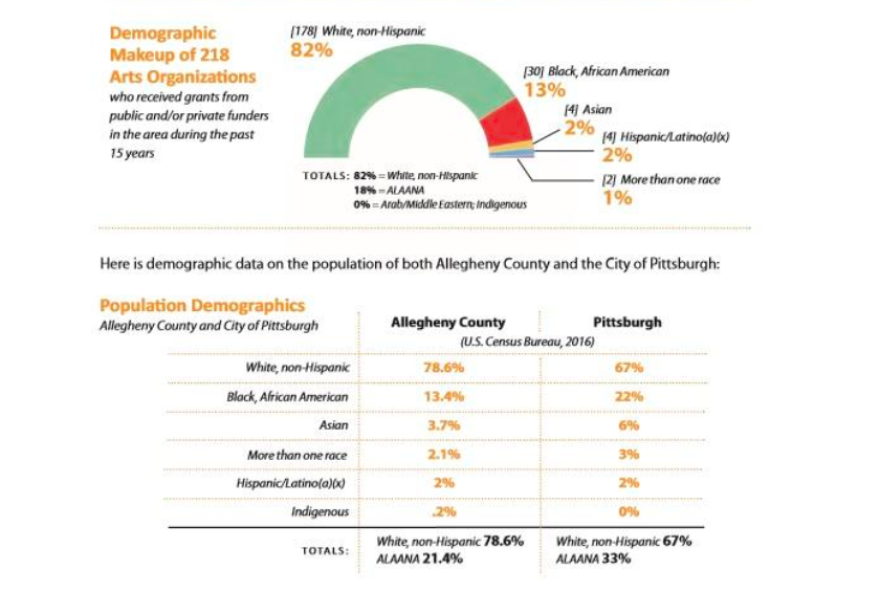Disparities persist in the number of arts grants, total amounts of funds and average amount of grant dollars received by organizations of color, compared to white, non-Hispanic groups.
These findings come from the Greater Pittsburgh Arts Council's (GPAC) report, titled “Racial Equity and Arts Funding in Greater Pittsburgh,” which also found there have been no comprehensive studies on the subject of equity and arts funding.
Officials with GPAC say researchers gathered primary survey data from funders by administering a survey of their grant-making policies and procedures.

CEO Mitch Swain says not only is it hard to track that kind of funding, “but there are no clearly defined terms or agreed upon demographics and language."
“We found that funding is not equitable in some cases, although there are cases where funders like Pittsburgh Foundation and the Heinz Endowments have created dedicated programs to address those things," he said.
In Pittsburgh, minorities make up one-third of the population, and GPAC has included all arts organizations of color in its report.
“We wanted to not just look at black organizations, but the state of a lot of organizations which encompasses, Asian, Native American, African-American, Latino, etc.” said Swain.
Only within the last 10 years has the arts community developed systems to standardize data collected by funders and arts organizations, which is one reason Swain says that it has taken so long to put together comprehensive data on the way arts organizations of color are funded.
He says some organizations aren’t being proactive about making funding opportunities available to everyone.
“I think there’s also a lack of understanding about how to do this kind of work, and the importance of stepping out of your comfort zone," he said. "In some cases, not just sending out information that a grant program is available, in many cases, you need to go where the people are, sit with them, talk to them and get to know them. You can actually get grant applications from people you wouldn’t ordinarily come across and connect to."
The report detailed that “no funders’ distribution patterns reflect both the population demographics of Allegheny County or the City of Pittsburgh, and the breakdown of the area’s arts organizations by race.”

It also collected surveys from 12 of 18 private foundations, and found that 89 percent don’t have a board-approved racial equity policy or plan, even though 70 percent reported that racial equity was a major priority for their foundations. Swain said he hopes the report will influence the funding community.
“I’m hopeful that funders will come to a greater understanding of the needs of organizations of color, and to have greater funding opportunities, and that those funding opportunities need to be more than just for projects; they need to be multi-year so that those entities can create capacity within the organizations and be more sustainable,” Swain said.
The report recommends that funders establish racial equity policies and plans, including providing grant-writing support for applicants and conducting organizational self-audits of progress on equity and inclusion.




